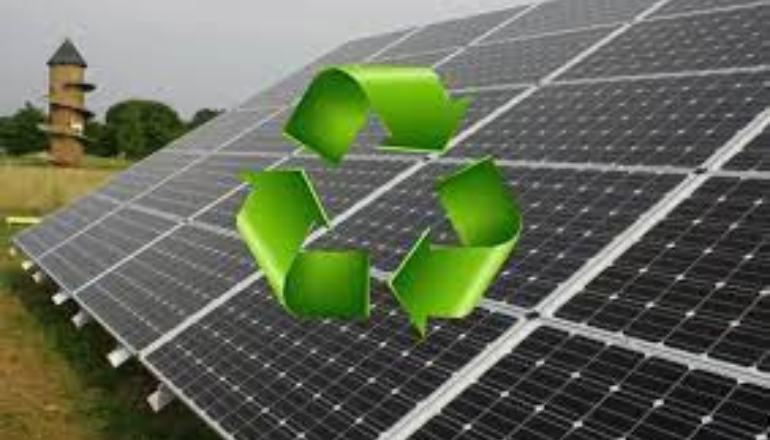India has the potential to become a significant center for the circular economy in the solar industry. Robust recycling of increasing solar waste is critical for India’s energy security.
Findings:
By 2030, India hopes to have installed about 292 GW of solar power, so solar PV waste management is essential for social, economic, and environmental reasons. In a new study, “Enabling a Circular Economy in India’s Solar Industry: Assessing the Solar Waste Quantum,” the Council on Energy, Environment and Water (CEEW) estimates the amount of solar waste generated in India specifically from different streams, excluding manufacturing.
The authors note that cumulative waste from India’s existing and new solar energy capacity (deployed between FY24 and FY30) could reach up to 600 kilotonnes by 2030—equivalent to filling up 720 Olympic-size swimming pools—as the country expands its renewable capacity to go net-zero.
The remaining 260 kilotonnes of waste will originate from newly installed capacity during this decade. India has a chance to secure robust solar supply chains and become a prominent hub for the circular economy in the solar industry, the study states.
The five states of Rajasthan, Gujarat, Karnataka, Andhra Pradesh, and Tamil Nadu will produce the majority of this waste. By 2030, the waste from India’s installed solar capacity alone will reach 340 kilotonnes, with the majority of the minerals—silicon, 12–18 tonnes of silver, and 16 tonnes of cadmium and tellurium—being essential to the country.
Although solar modules have a 25-year design life, some experience an early end of life as a result of damage sustained during transportation, handling, and project operations. CEEW suggests that the Indian solar sector should set up reverse logistics, storage, dismantling centers, and recycling plants to get ready for these new duties.
Data:
The study indexes 503 urban local bodies from 10 states with a treated used water reuse policy
Western, north-western states and Karnataka lead, with eastern states catching up
90% of ULBs, however, need targeted financial planning & investments for used water management
The way forward:
The industry should explore innovative financing options and business plans for solar waste management. Furthermore, to precisely map conceivable waste generation centers and strategically deploy waste management infrastructure, a database of the installed solar capacity should be updated regularly. This database should contain details like module technology, manufacturer, and commissioning date.
India has already started to address the waste with several initiatives. The E-waste Management Rules 2022, published by the Ministry of Environment, Forests, and Climate Change (MoEFCC) last year, will control the disposal of waste solar PV cells and modules in India. The extended producer responsibility (EPR) framework for waste management is mandated by these regulations for manufacturers of solar cells and modules.
CEEW experts:
Dr Arunabha Ghosh, CEO, CEEW, said, “India must proactively address solar waste, not just as an environmental imperative but as a strategic necessity for ensuring energy security and building a circular economy. As we witness the remarkable growth of solar from only 4 GW in March 2015 to 73 GW in December 2023, robust recycling mechanisms become increasingly crucial. They safeguard renewable ecosystems, create green jobs, enhance mineral security, foster innovation, and build resilient, circular supply chains.”
Neeraj Kuldeep, Senior Programme Lead, CEEW, said, “India’s G20 Presidency had identified a circular economy as a thrust area for sustainable development. A circular solar industry and responsible waste management will maximize resource efficiency and make domestic supply chains resilient. The CEEW study provides robust evidence of the opportunity in solar waste management. However, solar recycling technologies and the industry are still at a nascent stage and require policy push and support.”

